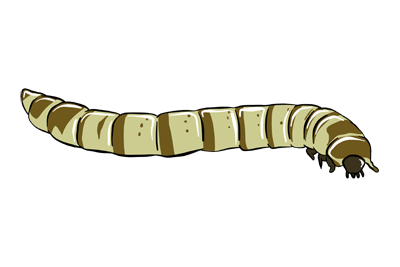How Much Pet Frogs Really Cost
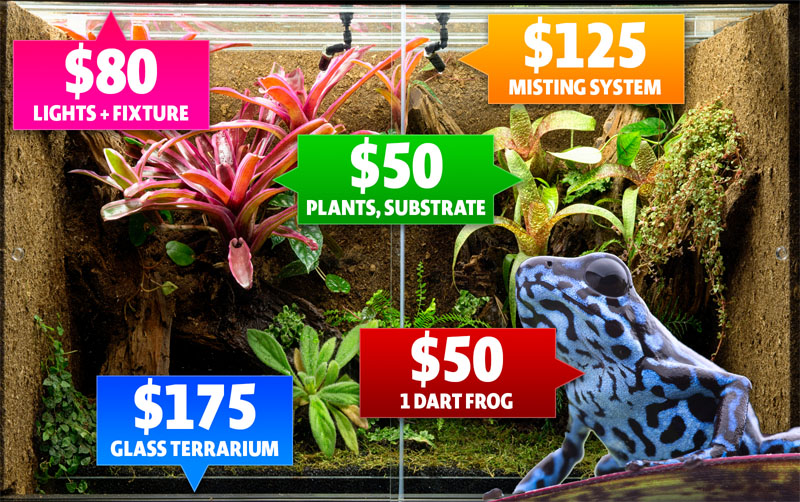
Keeping frogs and toads as pets is a fun hobby to get into. Frogs have striking colors and patterns and combining them with a naturalistic terrarium makes for a great display piece. But how much do pet frogs actually cost?
It may surprise you to learn that frogs are fairly cheap but their enclosure setup can get expensive.
Frogs are delicate and require a habitat they’re adapted to. A tropical tree frog, as an example, needs a tropical climate. Heating elements, misting systems, lights, and other equipment may be required to create a habitat suitable for your pet.
Naturally, a sophisticated enclosure with all the bells and whistles costs more than a simple enclosure. Moreover, all frogs are different and some are cheaper than others. Here are two examples:
- 1 Pacman Frog (Small Tank) Total: $225: $30 Frog + $50 Tank + $30 UTH + $30 Thermostat + $15 Thermo/Hygro meter + $30 lighting setup + $40 Substrate & Decorations
- 3 Red-Eyed Tree Frogs (Medium Terrarium) Total: $445: $40 Frog x 3 ($120) + $125 Tank + $30 Thermostat + $15 Thermo/Hygro meter + $80 Heat Lamp/Lighting + $75 Substrate, Plants, Decorations
You can see in the two examples above, the cost ranges drastically depending on the species. Each of these examples can be made slightly cheaper or more expensive. They’re somewhere in the middle and don’t include diet supplements or crickets.
The Average Cost of 7 Popular Frog Species
| Species | Average Cost | |
|---|---|---|
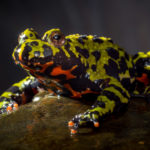 | Fire-bellied Toad | $20 USD |
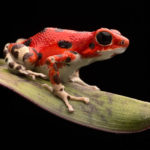 | Poison Dart Frog | $50 USD |
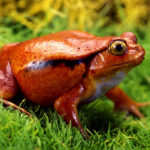 | Tomato Frog | $30 USD |
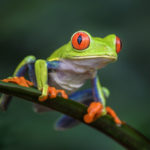 | Red-Eyed Tree Frog | $40 USD |
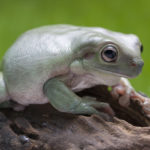 | White’s Tree Frog | $40 USD |
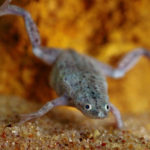 | African Dwarf Frog | $10 USD |
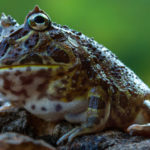 | Pacman Frog | $30 USD |
The cost of “designer” frogs is more expensive. Some species have different morphs (varying colors and patterns). Rare morphs demand a higher price. For example, you can buy a basic Pacman Frog from $20 to $40 but rare morphs of a Pacman Frog can reach up to $300 USD or more.
The Price of Tanks and Equipment
What might surprise you about keeping frogs as pets is the initial cost of the equipment. The cost of the equipment easily outweighs the cost of the frog, in most cases.
It’s difficult to give you an exact number of what you’ll spend because each species requires different equipment.
For example, keeping an American Toad in a moderately-sized aquarium is much cheaper than keeping a tropical tree frog in a medium-sized glass terrarium. The toad won’t require supplemental heating and you can squeak by with spray bottles for misting, etc. A tropical tree frog will likely need a heating element and perhaps a more complex humidifier (fogger or misting system).
In my Pacman Frog tank setup guide, you can see the process of making the habitat and see the items I used.
So, check out this list and continue reading afterward for my recommendations.
| Equipment | Entry Cost | Advanced Cost |
|---|---|---|
| Small Glass Terrarium (front opening)* | $75 | $125 |
| Medium Glass Terrarium (front opening)* | $175 | $250 |
| Small/Medium Aquarium (with lid)* | $50 | $100 |
| Heating Element* | $25 | $40 |
| Thermostat | $25 | $300 |
| Substrate (soil) | $20 | $50 |
| Thermometer / Hygrometer Combo | $15 | $40 |
| Accessories (water bowl, plants, decorations)* | $25 | $75+ |
| Lighting* | $30 | $100+ |
| Humidity Control* | $25 | $300+ |
Okay, if this is your first time buying a pet frog, here is what I recommend: Research the type of frog you want. Learn what type of environment your frog needs so you can determine which pieces of equipment you need.
Pay careful attention to the temperature and humidity requirements of your frog or toad. This will determine if you need a heating element. Humidity can be adjusted by using a spray bottle or, if you prefer, with an automated fogging or misting system.
Terrariums & Tanks*
You can buy a cheap aquarium and lid for under $50. Front-opening glass terrariums are more expensive. The style of enclosure depends on the locomotion (movement) of your pet.
- Arboreal species prefer vertical-style enclosures. These are tall tanks with room to move up and down.
- Terrestrial species prefer horizontal-style enclosures. These have more ground space for walking/hopping and burrowing.
- Aquatic species need an aquarium. These, of course, need to contain water and vertical space is not as important as horizontal space.
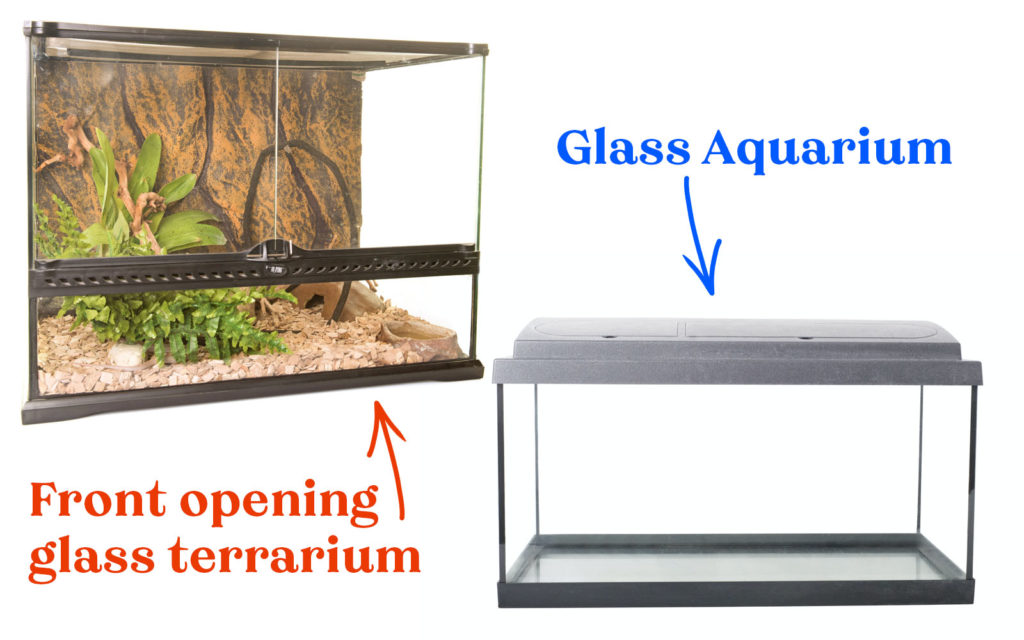
Terrarium vs. Aquarium
Technically speaking, a terrarium is a container with soil and plants. In the reptile and amphibian hobby, when talking about enclosures, people tend to refer to terrariums as ventilated enclosures. They sometimes have front-opening doors with extra vents on the top or bottom.
An aquarium is a sealed tank that holds water. There are no added vents. Most terrariums will contain water but only up to the doors.
Aquariums cost less than terrariums but they don’t have as much ventilation and they’re more difficult to clean. Extra ventilation can be beneficial but not always. The best thing about front-opening terrariums, in my opinion, is the ability to easily access the inside of the enclosure for feeding and cleaning.
Heating Elements*
The two primary heating elements used in the hobby are Under Tank Heaters (UTH) and Heat Lamps/Bulbs. Under-tank heaters have varying sizes, most of which are labeled; 10-15 gallons, 20 gallons, 30 gallons, etc. The bigger the heating pad, the more it costs. They range from $15 to $40 dollars.
Heat bulbs vary in price and intensity as well. There are traditional bulbs and “ceramic heat emitters”. The ceramic bulbs output heat only – no light. You will also need a “dome” or light fixture for a bulb. A dome is a fixture with a light socket.
A heat bulb can range from $10 – $20 dollars and, just like the UTH, there are different wattages. Some bulbs output more heat than others. Should you go this route, remember to purchase a dome as well. They cost between $15 to $30.
Some light fixtures/domes come with multiple sockets for multiple bulbs. For example, you can put a heat bulb on one side and a grow light on the other.
Heating elements should always be paired with a thermostat. A thermostat is a device that controls the heating element. You can set the thermostat to turn on when the temperature is too low and turn off when the temperature is too high.
Accessories*
You can go as crazy as you want here but, at a minimum, I recommend purchasing at least two “hides”. Hides are anything your frog can hide in. It could be an appropriately-sized cork-bark tube, plants (real or fake), or decoration.
Common Accessories:
- Water bowl
- Feeding dish
- Plants
- Hides
- Vines
- Decorations
Individual accessories range in price between $5 – $25, depending on what you get.
Lighting*
Providing lighting for amphibians and reptiles is important. The reason lighting is important is because it creates a day and night cycle for your pet(s), which is crucial for their overall well-being.
Lighting is a complex topic. Live plants need special lighting to grow and UVB can be good or bad, depending on how it’s used and the species you’re keeping. I won’t dive into this topic here.
Check out this post about Pacman Frogs and UVB for an introduction to the topic.
You can get a nice LED bulb for $10 – $15. Of course, you need a light fixture to use it and that will cost you another $15 – $30. Many people, myself included, opt for using a “hood” lighting fixture. It’s a light fixture with LED or fluorescent bulbs that sit atop the enclosure. They cost between $50 – $100.
Humidity Control*
Proper amphibian husbandry involves keeping your frog’s enclosure within the desired humidity range. The cheapest, most simple way of doing this is by misting the enclosure with a spray bottle.
Depending on your setup and the pet’s requirements, you may need to do this once or multiple times per day.
You can, however, invest in an automated misting or fogging system. These systems can be set to turn on/off at specific times of the day. This ensures your frog is comfortable while you’re not there. A decent fogging system costs between $50 – $80 while misting systems can run between $50 – $300.
Otherwise, buy a spray bottle for $5 – $10 and keep an eye on the thermometer/hygrometer reader.
Food and Upkeep
Frogs are mostly carnivores. They need live insects and you can’t simply catch crickets and worms from your garden. The only time this is acceptable is if you’re keeping a species native to the area.
Most pet stores carry a supply of crickets, mealworms, wax worms, and sometimes fruit flies and dubia roaches. They range in price depending on your location and their availability. Crickets in my area cost between $0.06 – $0.15 each.
| Item | Average Cost |
|---|---|
| Crickets, Mealworms, etc | $10 – $15 / per frog / per month |
| Calcium Supplement | $15 |
| Vitamin Supplement | $15 |
| Electricity for Heater + Lighting | $5+ per month |
The upkeep for amphibians is relatively easy. Spot cleaning once or twice per week and a deep clean every few months will suffice. As far as your electricity bill is concerned, it depends on what you’re using.
Most equipment is efficient and won’t raise your bill drastically. You likely won’t notice a change in your bill with an entry-level setup for a single enclosure.
Having several enclosures on a reptile rack with lighting, misting systems, and several heating elements will certainly increase your power usage and this will be reflected in your electric bill.
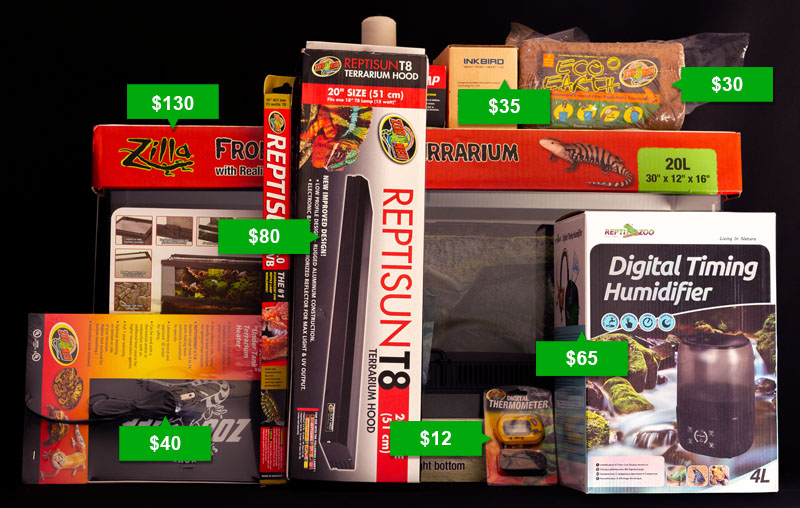
TLDR; How Much Do Frogs Cost?
Keeping frogs and toads as pets is a fun hobby but the initial setup cost can be expensive. Most of the popular species range in price from $20 to $50 per frog. Rare morphs are more expensive; they can reach up to $300 or more.
The most expensive part of keeping frogs is the initial setup cost: the tank, heating element, thermostat, misting or fogging systems, lighting, substrate (soil), plants, and decorations.
In the opening paragraphs, I gave two examples of how much it would cost for a single Pacman Frog or three Red-Eyed Trees Frogs. The Pacman Frog setup (1 frog included) totaled around $225 USD while the Red-Eyed Tree Frog setup (3 frogs included) totaled around $445 USD. Both examples can be made slightly cheaper or more expensive.
Ready for the next step? Check out my guide on where to buy amphibians and have a look around the website for care sheets, information, and guides!


